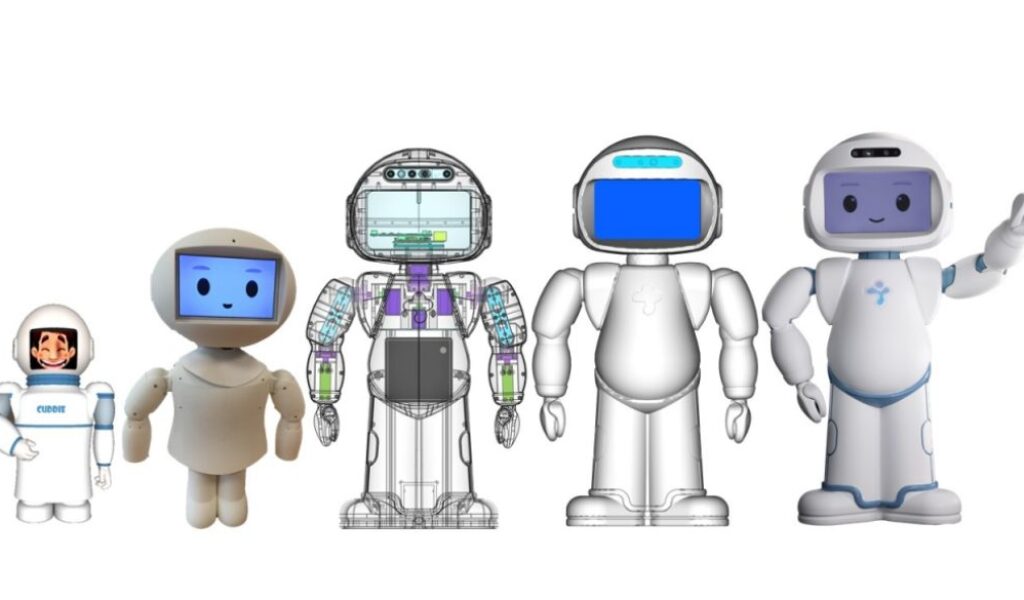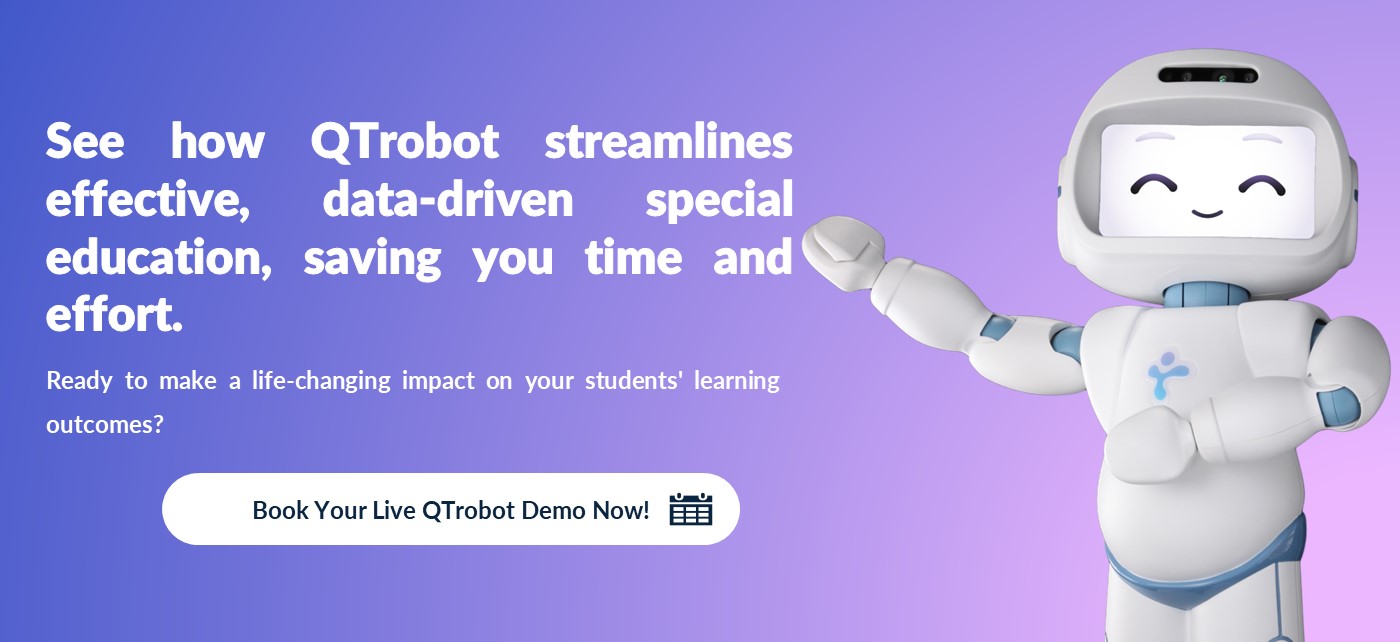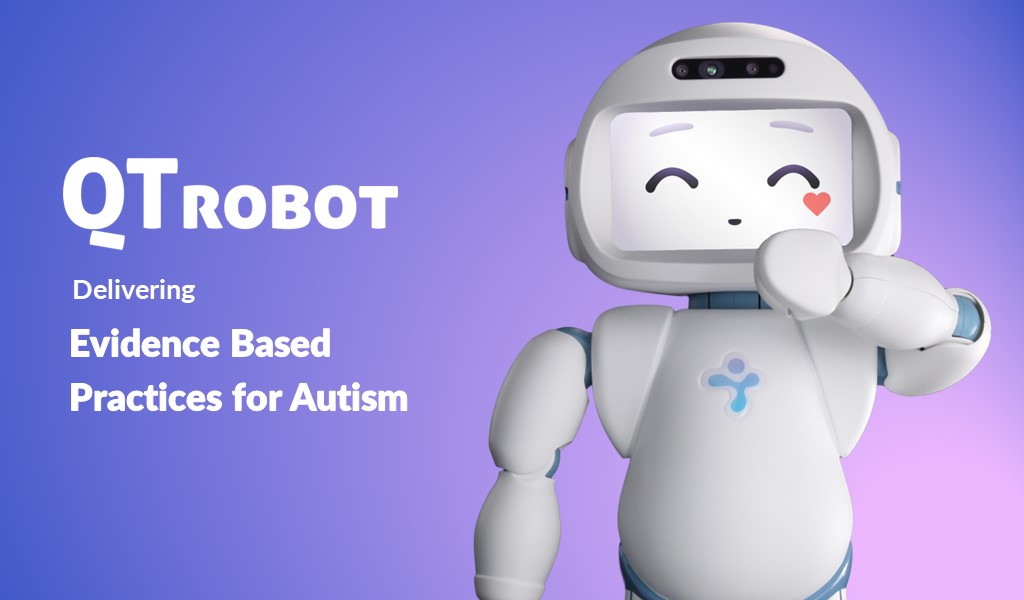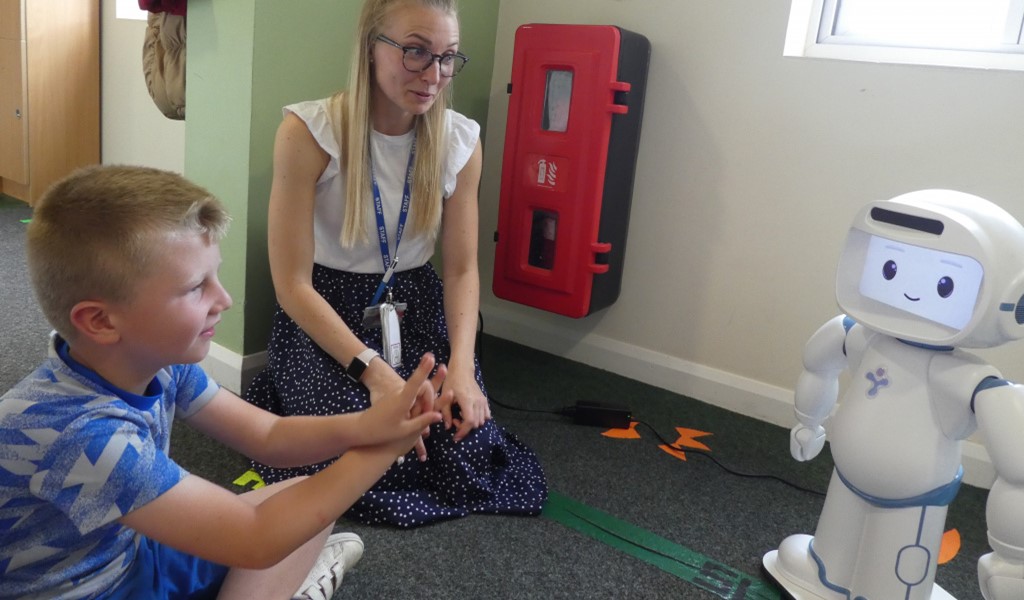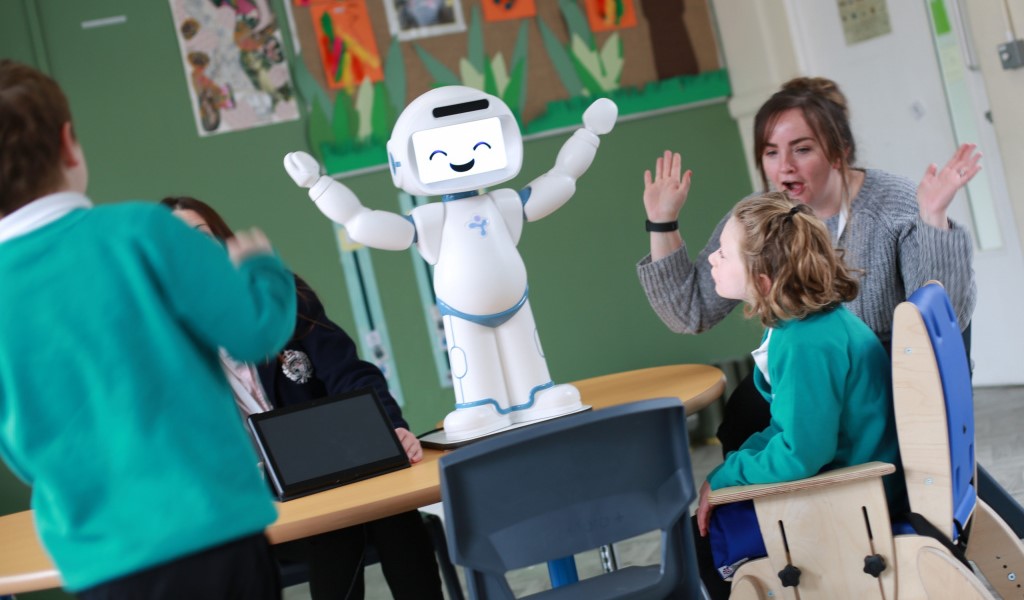For many years researchers and therapists have tested a variety of technologies to assist them in teaching new skills to children with Autism Spectrum Disorder (ASD). Scientific and empirical studies have shown technology to be useful in autism training and have promoted Technology-aided Instruction and Intervention (TAII) to be one of the 27 accepted evidence-based practices.
One of the most successful technologies used for autism training is robotics. Children with autism have a high interest in robots due to their predictable, rule-based, simple and repetitive behaviors. Children have shown more attention and less repetitive and stereotyped behaviors while working with a robot making robots good catalysts for increasing social interaction in children with autism.
A Robot for Autism:
Not every robot is suitable for training of children with autism. When choosing a robot to use in ASD training, there are many design and technical features one should consider.
Based on the results of many research projects, the following characteristics have been identified as necessary for the robot to be considered as a useful tool to assist in the education process of children on the autism spectrum:
1. The Appearance Of The Robot Should Be Engaging And Non-Threatening For Kids:
The robot’s most important task is to attract and sustain the child’s attention and should attract the child to the educational session. The robot should therefore be appealing and interesting for children and should incentivize them to interact with it. That being said, the design and the appearance of the robot should not overstimulate and overwhelm the child.
Using too many colors, design features such as shining lights, or too many mechanical parts can distract the child and hinder the robot’s efficiency in enhancing engagement. It is recommended to use neutral colours for the robot body.
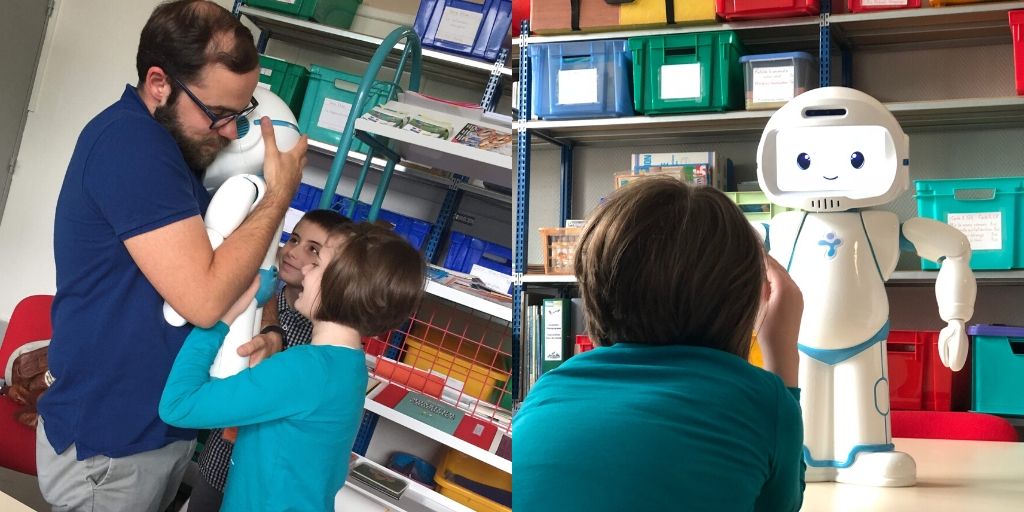
A robot for autism training should look approachable and interesting to be able to engage learners
2. Humanoid Shape Is Important
Let’s not to forget that the primary objective of the training is to help the child generalize the skills learnt from the robot to his day-to-day interactions with other humans.
Having a humanoid body not only facilitates the ability to teach social concepts, such as eye gaze, personal distance and imitation but also improves the generalization of skills learnt from human-robot interaction to human-human interaction.
Even though non-humanoid robots can engage and attract children’s attention, they are less likely to improve the generalization of skills. The humanoid features, like a head, body and arms, allow for training a wide range of skills that would not be feasible with a non-humanoid robot.
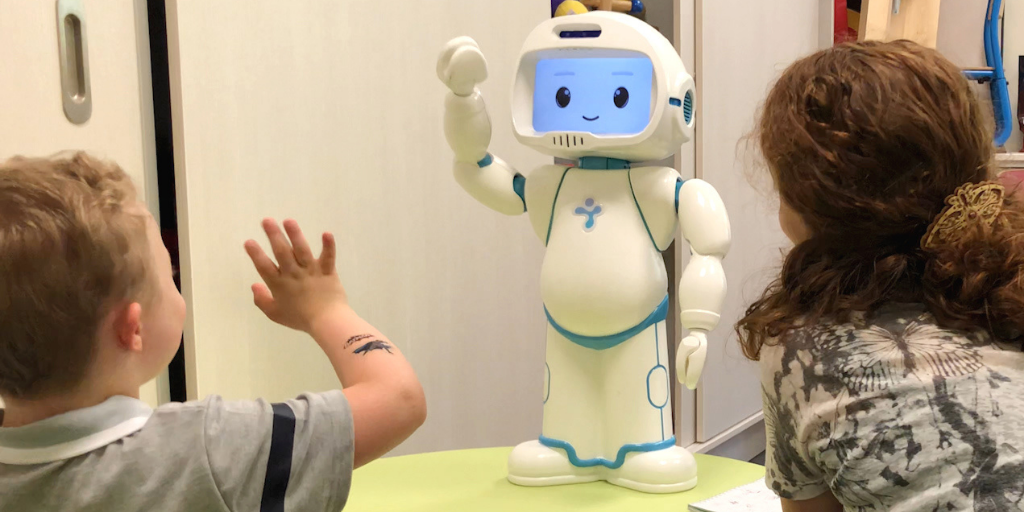
Robot for autism practising social greeting and communication
3. The Robot Should Be Expressive
Teaching emotional regulation and social communication skills are critical for children with ASD. Having a better understanding of emotions and social interaction ameliorates kids mental health and social inclusion. Without facial expressions, the functionalities of the robot would be very limited, especially when it comes to any form of social communication or emotional regulation.
The facial expressions should not be too realistic looking, but simpler and more exaggerated. If the robot’s face looks too similar to a human face, it risks creating an uncanny valley effect. For example, people rank robots less likeable and friendly when they become more human-like.
On the other hand, reading the facial expressions of the robot may become even more difficult than a real human face, when the robot is too humanoid looking. Some studies show that even neurotypical children have difficulty to read the expressions of robots with faces that are a replication of a human face . This is mainly resulted from not being able to replicate the same degree of movement that a human face has.
4. The Size Of The Robot Is An Impactful Feature:
Having a toddler size is the most practical size to facilitate the generalization and to practice imitation, joint attention and role-play. Larger robots are often perceived as scary and threatening and are not as approached by the child. On the other hand, very small robots are less engaging in the long term. Ideally, the robot face would be at eye level with the child to maximise interaction.
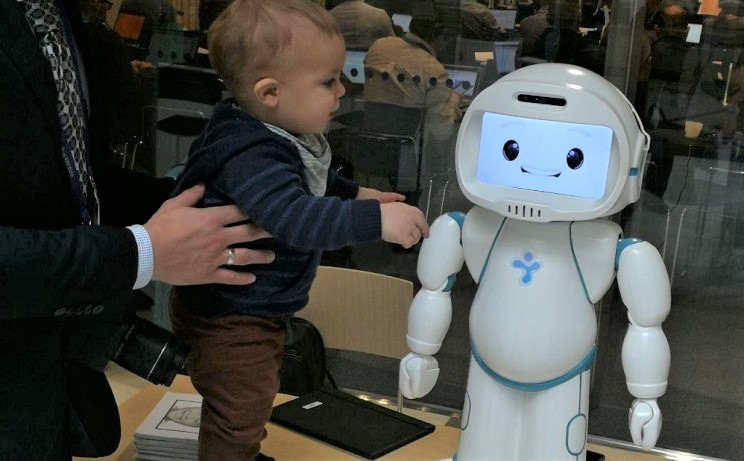
The toddler size is the most practical size for a robot for autism training, to be non-threatening but engaging
5. Range Of Motion Of The Robot’s Joint Should Be Comparable With Humans
The bodily expressions of the robot should be humanoid in order to effectively teach body language and social communication skills. Having joints that allow upper body movement can facilitate teaching emotions body language, non-verbal communication and imitation.

Robot for autism should be able to demonstrate body language of emotions and nonverbal cues
The robot should also be able to hold light objects or toys that can be used for training imitation and playing various games during the training sessions.
However, too much mobility can make the robot distracting. For example, research has shown that walking robots tend to make the sessions more challenging, rather than more engaging. The robot’s movement can often divert the child’s attention away from the educational content.
Finally, on a practical level, increasing the number of joints can make the robot more error-prone, fragile and cost-intensive.
QTrobot, Expressive humanoid robot for autism training
QTrobot was intentionally designed after the careful review of the relevant literature on social robotics and technology-aided instruction and intervention for children with ASD and other developmental challenges. All the effective engagement and usability factors mentioned previously were taken into consideration when designing the QTrobot, to maximize the effectiveness of the robot for the training of children with autism.
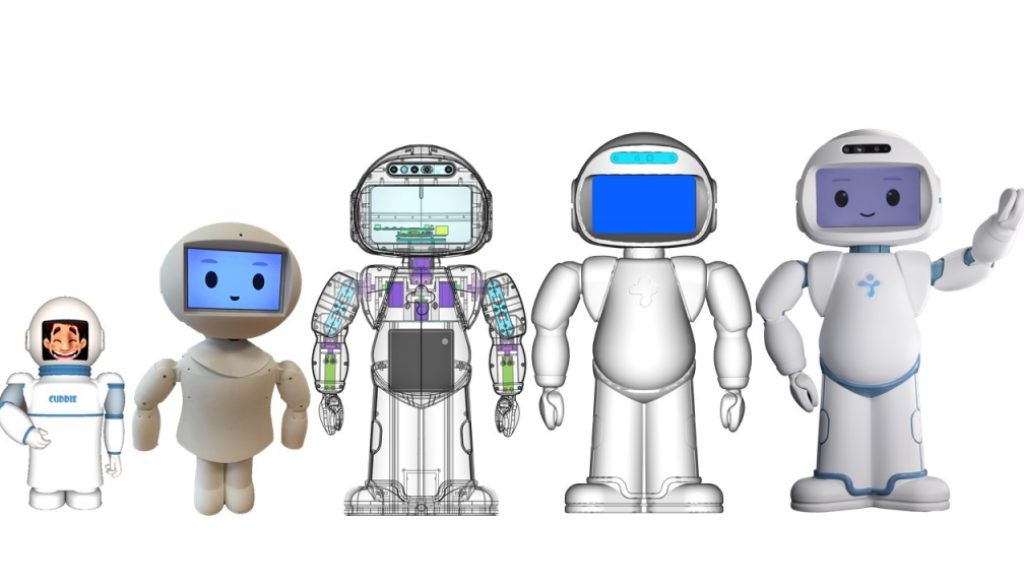
Design process of QTrobot, the expressive robot for autism
QTrobot is 63 cm tall, similar in size to a toddler, which makes it perfectly suited for standing on a table and interacting with children during a therapy session. When children sit down, the robot is at their eye level (really?). This makes the children feel more comfortable and engaged throughout their interactions with the robot.
By having a simple astronaut design, children often perceive QTrobot as a little social character in a special costume. QTrobot is white with very simple design features. As a result, there is no detail, color or particular feature that distracts or overstimulates children. In reality, children immediately start to look at it, approach it and engage with it. Due to children’s fascination and comfort with its features, QTrobot can function as their play partner in practising skills such as turn-taking, imitation, greeting and many other social skills.
By having a monitor as a face, QTrobot is capable of showing animated videos that immediately grab the child’s attention. This feature allows QTrobot to have limitless possibilities when it comes to showing various emotions as well as facial expressions related to speech therapy, teaching facio-oral imitation as well as autonomy skills, such as brushing teeth and washing the face.

QTrobot Teaches autonomy and self help to children with autism by demonstrating and modeling behaviors
The facial expressions that appear on the monitor are inspired by the existing literature on teaching emotions to children with autism. For example, all of the emotions and expressions are simplified and exaggerated.; all unnecessary details have been removed from the face; and the face only presents the main critical features related to each emotion. In this way, the child learns the most distinct features in any given facial expression, allowing it to identify and discriminate from a wide variety of facial expressions in human-to-human interactions.
In terms of movement, QTrobot has motors in the neck, shoulders, elbows and hands. This level of freedom of movement allows it to generate a diverse range of movements related to teaching emotions, non-verbal communication, imitation and joint attention. Importantly, all of QTrobot’s movements are designed for tabletop applications and play time activities.
